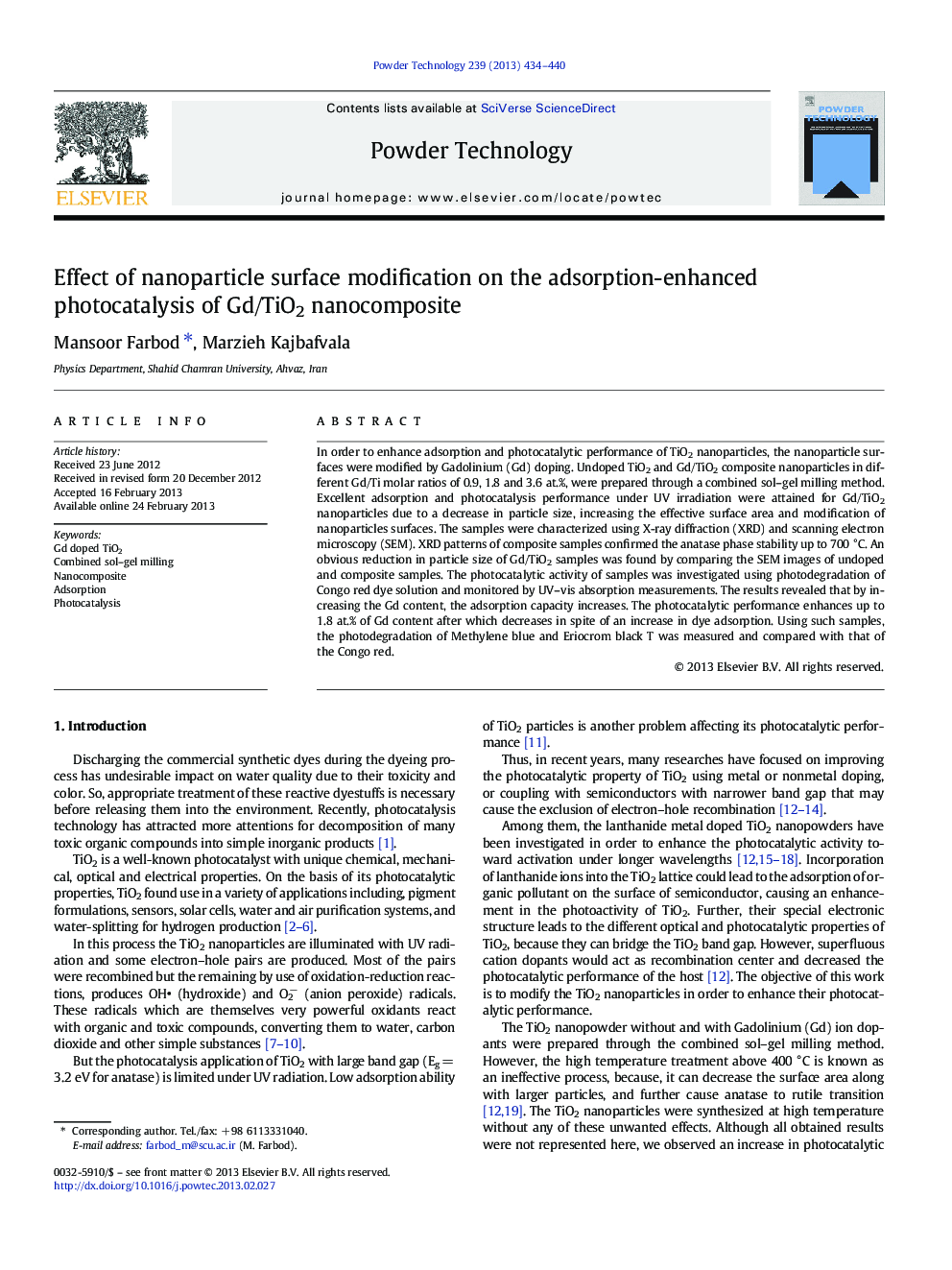| کد مقاله | کد نشریه | سال انتشار | مقاله انگلیسی | نسخه تمام متن |
|---|---|---|---|---|
| 236797 | 465685 | 2013 | 7 صفحه PDF | دانلود رایگان |

In order to enhance adsorption and photocatalytic performance of TiO2 nanoparticles, the nanoparticle surfaces were modified by Gadolinium (Gd) doping. Undoped TiO2 and Gd/TiO2 composite nanoparticles in different Gd/Ti molar ratios of 0.9, 1.8 and 3.6 at.%, were prepared through a combined sol–gel milling method. Excellent adsorption and photocatalysis performance under UV irradiation were attained for Gd/TiO2 nanoparticles due to a decrease in particle size, increasing the effective surface area and modification of nanoparticles surfaces. The samples were characterized using X-ray diffraction (XRD) and scanning electron microscopy (SEM). XRD patterns of composite samples confirmed the anatase phase stability up to 700 °C. An obvious reduction in particle size of Gd/TiO2 samples was found by comparing the SEM images of undoped and composite samples. The photocatalytic activity of samples was investigated using photodegradation of Congo red dye solution and monitored by UV–vis absorption measurements. The results revealed that by increasing the Gd content, the adsorption capacity increases. The photocatalytic performance enhances up to 1.8 at.% of Gd content after which decreases in spite of an increase in dye adsorption. Using such samples, the photodegradation of Methylene blue and Eriocrom black T was measured and compared with that of the Congo red.
Normalized concentration of Congo red versus UV irradiation time in presence of 0, 0.9, 1.8 and 3.6 at.% of Gd/TiO2 composite nanoparticles sintered at 700 °C.Figure optionsDownload as PowerPoint slideHighlights
► Gd/TiO2 composite nanoparticles were sintered by co-sol–gel milling method.
► The nanoparticle size decreased by increasing the Gd content.
► Adsorption capacity of nanoparticles increased by increasing the Gd content.
► Photocatalytic performance was improved by increasing the Gd content up to 1.8%.
► Surface adsorption was critical in photocatalytic performance of nanoparticles.
Journal: Powder Technology - Volume 239, May 2013, Pages 434–440